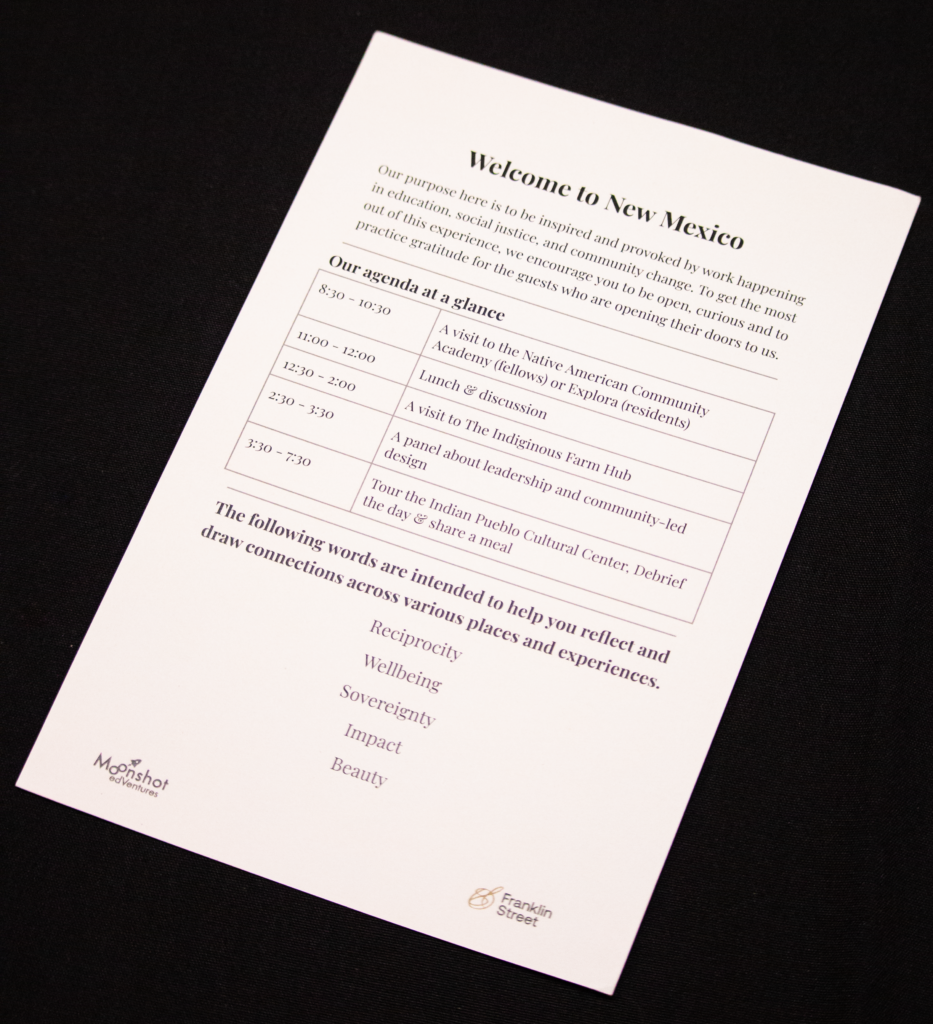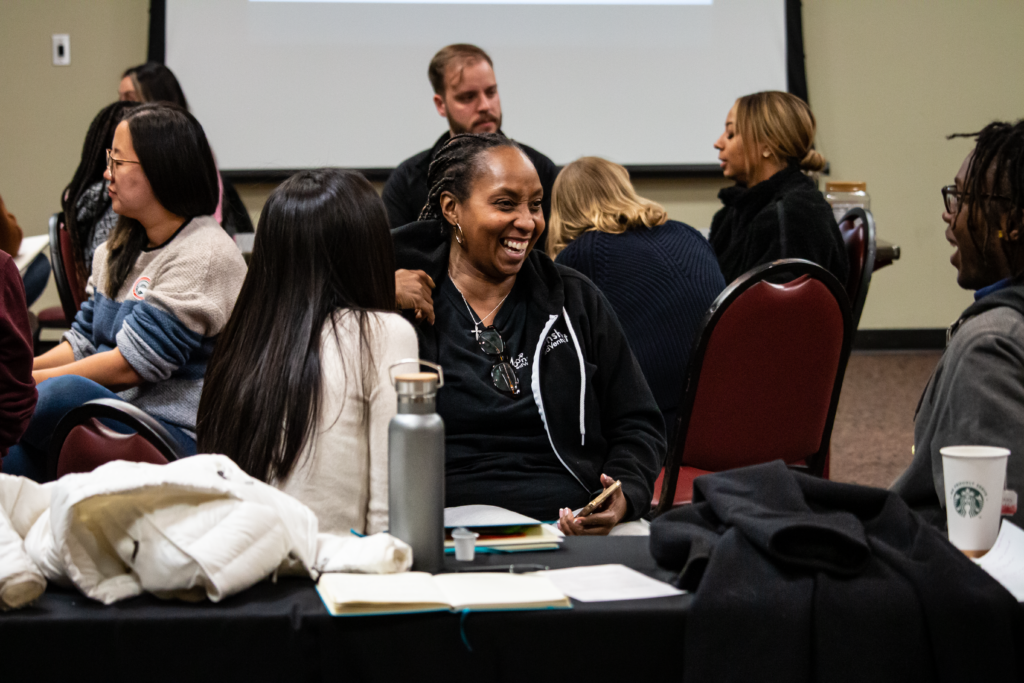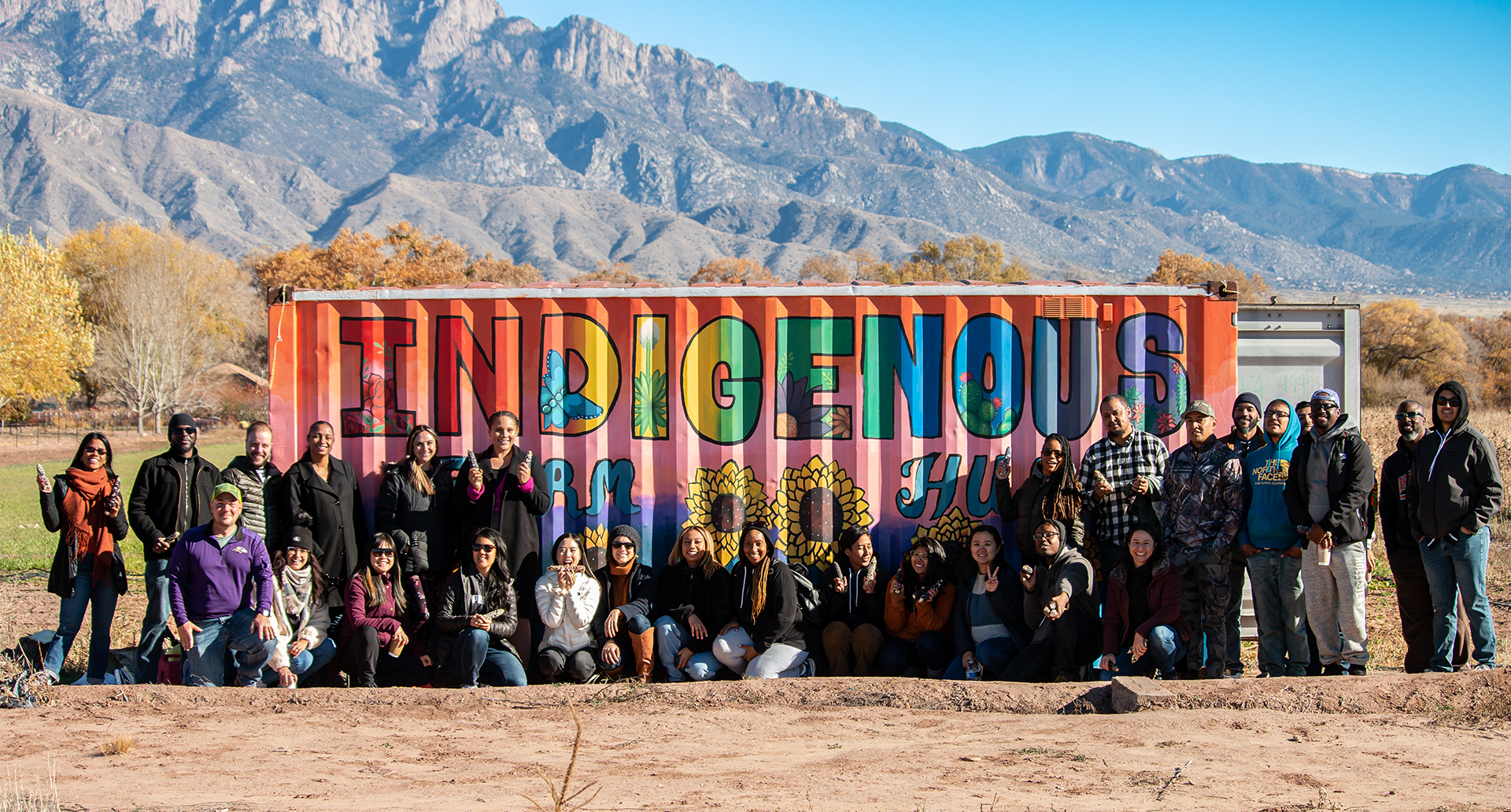Reclaiming our attention to learn well
Last week, my colleague Marielle and I traveled to Albuquerque, New Mexico with 24 education entrepreneurs. We were in search of inspiration from incredible leaders and organizations like the Native American Community Academy, Explora, The Indigenous Farm Hub, and New Mexico United.
These entrepreneurs were members of Moonshot EdVentures’ latest fellowship and program residency. They were squeezing this trip in between their daily work of launching and leading schools and nonprofits – busy people with a lot on their minds! So Marielle and I asked ourselves… how might we invite people to bring their full and highest quality attention to the experience we were about to have?
On the face of it, attention is a relatively simple concept. Just decide to pay attention… right?
Any teacher or caretaker knows that attention is not that simple. Kids who aren’t paying attention aren’t paying attention for a reason. They’re distracted. And it's not that different for us as adults. Even as I’m writing this, I’m having one of “those weeks.” My calendar is crammed with meetings, I have ~5 things on my “must do today” list, and I can only cross them off during the 30 minute holes in my schedule. As someone who has been devouring books, articles and podcasts about attention for months – and who is writing about it as we speak – my scattered attention feels extremely frustrating.
In her book, Do Nothing, Celeste Headlee argues that our increased business and propensity to multitask stands in our way of creativity and fulfillment. She says, “Your life is what you pay attention to.”1 Yes! You can have the most beautifully designed learning experience, the most authentic and trusting relationships, and a purposefully created physical space—and folks still won’t learn if they aren’t paying attention.
Johann Hari, the author of Stolen Focus, explains the “switch cost effect” - otherwise known as trying to do more than one thing at a time.2 A growing body of research shows that multitasking leads us to do everything less effectively. In one particularly compelling study, Hewlett-Packard hired a scientist to help understand the impact of multitasking on their employees. One group of workers was assigned a task and asked to complete it uninterrupted. The second group did the task while also being responsive to email and phone calls (sound familiar?). The net effect was a 10-point drop in IQ for the multitasking group - a larger drop than if the group had smoked marijuana before completing their task.3
Perhaps even more troubling than our lost productivity is what’s known as the “creativity drain.” Creative capacity comes from the brain’s shaping new connections out of what we’ve seen, heard, and learned. Undistracted time is critical because that’s when our minds are most able to wander back to everything we’ve absorbed and to draw links between those stimuli in new ways. New ideas are born from this “mind-wandering” experience. Therefore, when we’re preoccupied with switching between activities we’re simply unable to have truly original and creative thoughts.
The challenge of focusing our attention isn’t just relegated to the workplace. Athletes use visualizations to focus their mind-body connection before they compete. Yoga practitioners might identify a Drishti to focus their eyes and minds while meditating. My partner and I recently agreed to put our cell phones away while we cook together. Perhaps you’re a runner, an artist, or just a good friend who has your own rituals for maintaining focus.
At Franklin Street, we’re invested in helping the learners we work with to focus their attention. Let’s take a look.
Moonshot EdVentures’ Trip to Albuquerque, New Mexico…
Morning circle. Our group gathers outside our first stop, the Native American Community Academy. Each person gazes down at a program for the day, and we read a land acknowledgement. We close our eyes and take a deep breath. I say five words – Reciprocity, Wellbeing, Sovereignty, Impact, Beauty. I say them again. “How do you connect to one or more of the words you just heard?” I ask.

This practice is deceivingly simple on purpose. In giving people just five words to focus on, their minds are less susceptible to distraction. Throughout the day, we visit schools, museums, community centers, galleries, and farms—and always, the entrepreneurs refer back to these five words to make connections across spaces, and to their own work.
End-of-day debrief. Our group convenes at the Indian Pueblo Cultural Center. Each person turns to a colleague and shares a word that’s most salient to them after our visits and why. As Marielle and I rotate around the room, we hear people say:
- Wellbeing: It resonated with me hearing stories from BIPOC women in leadership roles because I'm experiencing the same things they are. It was inspiring, empowering, and encouraging to hear these stories because I don't feel alone and it fed my own wellbeing.
- Impact: I’m struck by the way our hosts have developed tentacles that extend into the broader community in many different ways. The ripple effects of those relationships were palpable.
- Sovereignty: Each organization we visited stimulated my thoughts around self-determination. Whether it was Explora, who organized resources at a grassroots level to establish programming and create strong partnerships with the city. Or the Farm Hub and The Indian Pueblo Cultural Center, which made me think about how I might live from the land.

As a learning designer, I sometimes make the mistake of injecting too much complexity with a new framework or an elaborate protocol. Learners need spaciousness and focus to think deeply. This tactic - The Five Words - is one way of resisting that urge to overcomplicate and instead allow space for learners to focus.
Consider identifying an upcoming experience where you really want to focus. Start small–not a yearlong project, but a specific meeting for the project; not a whole relationship, but a meal with that person; not a marathon, but your next training run. How might you intentionally bring your highest quality attention and help others do the same?
1Headlee, C. (2020). Do Nothing: How to Break Away from Overworking, Overdoing, and Underliving. Harmony.
2Hari, J. (2022). Stolen Focus: Why You Can’t Pay Attention—and How to Think Deeply Again. NY: Crown Publishing Group.
3Williams, J. (2018). Stand out of Our Light. Cambridge University Press.
4Hoffman, E. (2010). Time. London: Profile Books.
